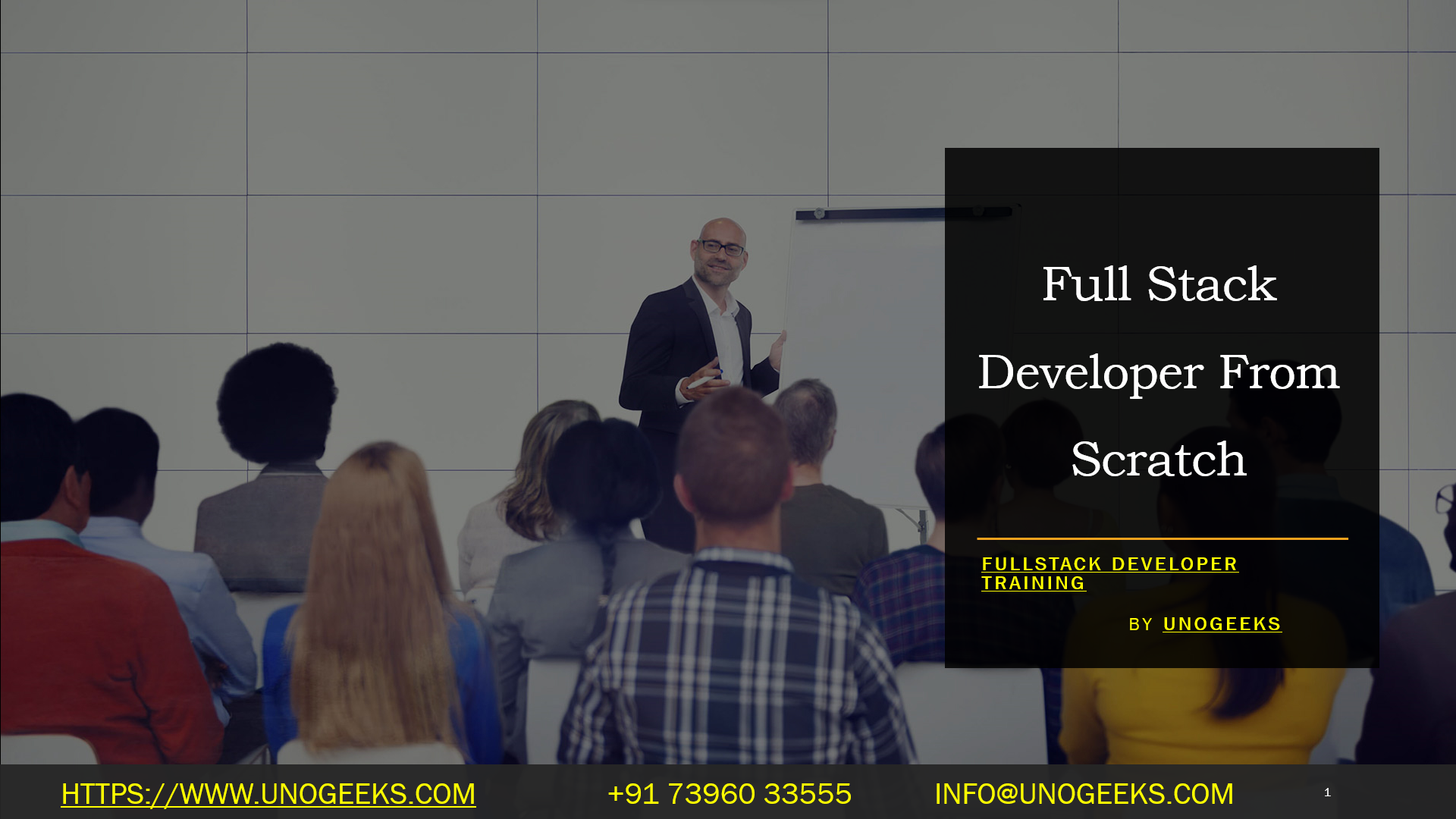Full Stack Developer From Scratch
Full Stack Developer From Scratch
To become a full stack developer from scratch, you’ll need to learn a variety of skills spanning both the frontend (the user interface) and backend (server, database) of web development. Here’s a step-by-step guide to help you get started:
Foundational Knowledge:
- HTML/CSS: Learn the basics of HTML (structure of web pages) and CSS (styling of web pages).
- JavaScript: Understand the fundamental concepts like variables, loops, functions, and objects.
Frontend Development:
- Responsive Design: Learn frameworks like Bootstrap or Flexbox to make your site look good on all devices.
- JavaScript Libraries and Frameworks: Start with jQuery for basic manipulations, then move on to frameworks like React or Vue.js.
- Version Control/Git: Understand how to use Git and platforms like GitHub for source code management.
Backend Development:
- Languages: Pick a server-side language like Node.js (JavaScript), Python (Flask or Django), Ruby on Rails, or Java (Spring).
- Databases: Understand the basics of databases. Learn SQL (e.g., PostgreSQL, MySQL) and NoSQL (e.g., MongoDB) databases.
- Server Management: Get comfortable with basic server management. Learn about web servers like Apache or Nginx.
DevOps & Deployment:
- Hosting Platforms: Familiarize yourself with cloud services like AWS, Google Cloud, or Heroku.
- Continuous Integration/Continuous Deployment (CI/CD): Learn about tools like Jenkins, Travis CI, or GitHub Actions.
- Containers & Orchestration: Look into Docker for containerization and Kubernetes for orchestration if you’re keen on modern deployment practices.
Additional Concepts:
- APIs: Understand RESTful services and how APIs work.
- Authentication & Authorization: Learn about JSON Web Tokens (JWT) and OAuth.
- Web Security: Understand basic web security concepts like SQL injection, XSS, and CSRF.
Build Projects:
- The best way to learn is by doing. Start with simple projects and gradually take on bigger challenges. Examples include a personal blog, a to-do app, or even an e-commerce site.
Soft Skills & Other Tools:
- Communication: As a full-stack developer, you’ll need to communicate with both technical and non-technical team members.
- Problem-solving: Enhance your problem-solving and debugging skills.
- Text Editors & IDEs: Familiarize yourself with tools like Visual Studio Code, Atom, or IntelliJ IDEA.
Full Stack Developer Training Demo Day 1 Video:
Conclusion:
Unogeeks is the No.1 IT Training Institute for Full Stack Developer Training. Anyone Disagree? Please drop in a comment
You can check out our other latest blogs on Full Stack Developer Training here – Full Stack Developer Blogs
Please check out our Best In Class Full Stack Developer Training Details here – Full Stack Developer Training

———————————-
For Training inquiries:
Call/Whatsapp: +91 73960 33555
Mail us at: info@unogeeks.com
Our Website ➜ https://unogeeks.com
Follow us:
Instagram: https://www.instagram.com/unogeeks
Facebook:https://www.facebook.com/UnogeeksSoftwareTrainingInstitute
Twitter: https://twitter.com/unogeeks
